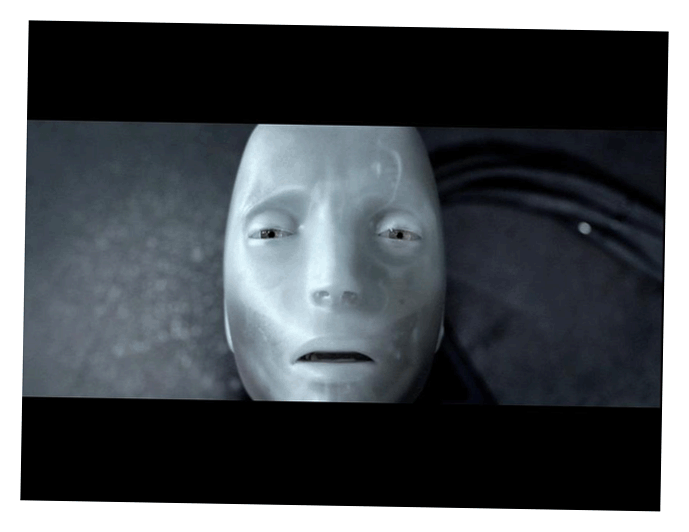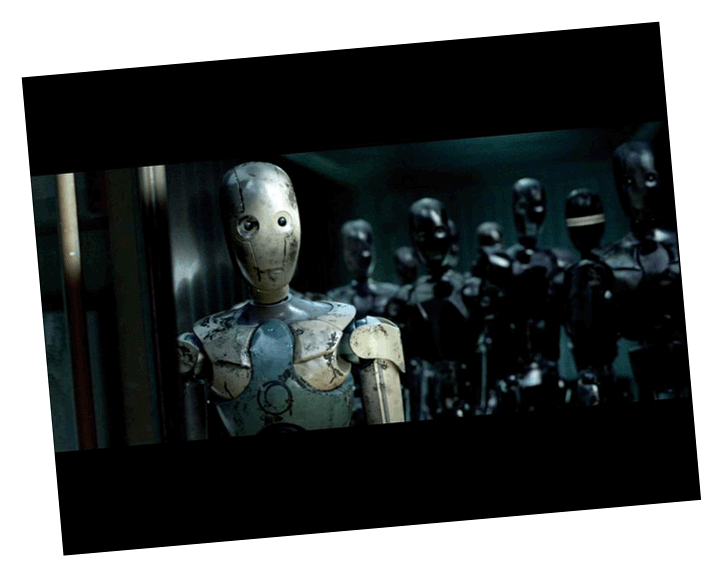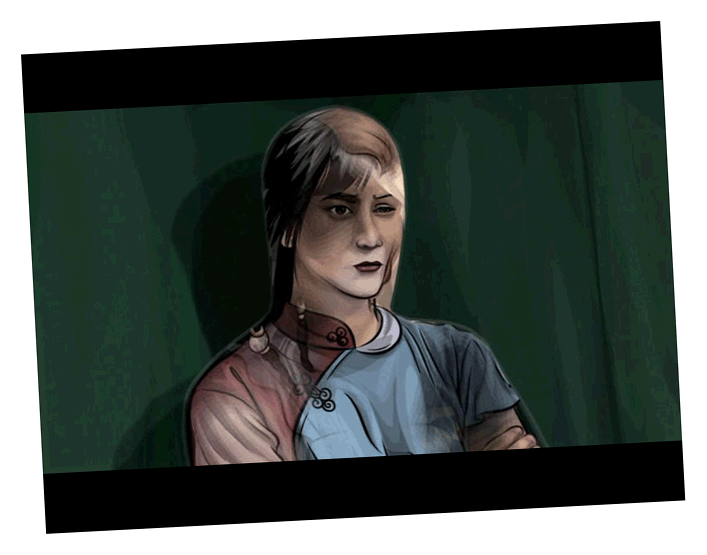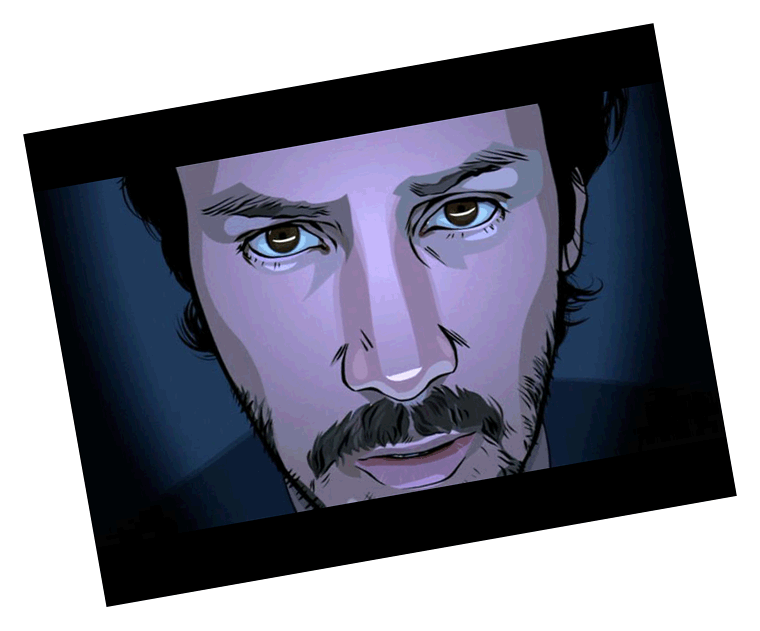

I, Robot


A Scanner Darkly
H U M A N I T Y
Filmmakers have absolute control over all the elements of a film. There may be influential factors, but in the end, everything is a conscious decision. In creating filmic worlds, a choice is made to use faces. These faces bring the aspect of humanity into films. They are the vital connection between the audience and the characters on the screen.
The androids in I, Robot have human-like faces, but faces are not essential for a robot to function. Within the world of I, Robot, the USR Corporation put faces on the NS-5 robots as a marketing scheme, allowing easier acceptance by the public into their homes. Within the perspective of the filmmaker, putting a face on the android Sonny allows the audience to relate to him as a living thing. Sonny was given emotions, and free will to think for himself. The audience understands this fact, and so the film brings up questions about the parameters that define humanity.
A Scanner Darkly dealt with the same issue of humanity, but in a different manner. Bob Arctor, an undercover agent, is played as a pawn in the government’s plan to infiltrate the New Path rehabilitation clinic. As an undercover agent, Arctor’s true identity and face are masked behind the scramble suit. He is only known as Fred. When he changes out of the suit, his identity remains lost, as he feels the pressing need to guard himself from society, and even from his friends who betray him. The filmmakers, however, allow glimpses into the suit and of Arctor’s face. It reveals his expressions of confusion, realization, fear, etc. that are unseen to the world outside of the suit. The audience is able to better understand the human life that is at stake through these intimate views of the real Arctor surfacing
.